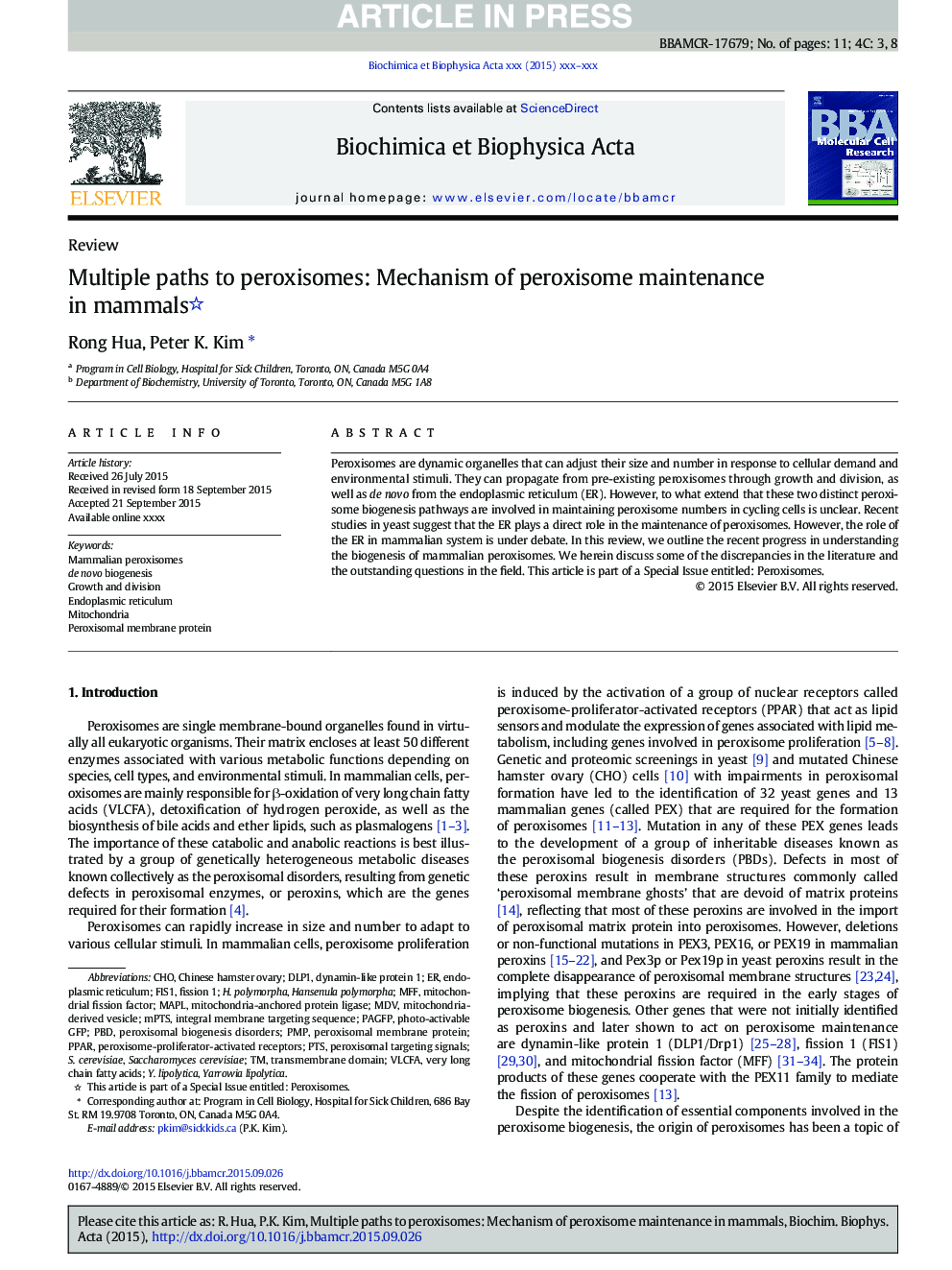| Article ID | Journal | Published Year | Pages | File Type |
|---|---|---|---|---|
| 10801688 | Biochimica et Biophysica Acta (BBA) - Molecular Cell Research | 2016 | 11 Pages |
Abstract
Peroxisomes are dynamic organelles that can adjust their size and number in response to cellular demand and environmental stimuli. They can propagate from pre-existing peroxisomes through growth and division, as well as de novo from the endoplasmic reticulum (ER). However, to what extend that these two distinct peroxisome biogenesis pathways are involved in maintaining peroxisome numbers in cycling cells is unclear. Recent studies in yeast suggest that the ER plays a direct role in the maintenance of peroxisomes. However, the role of the ER in mammalian system is under debate. In this review, we outline the recent progress in understanding the biogenesis of mammalian peroxisomes. We herein discuss some of the discrepancies in the literature and the outstanding questions in the field. This article is part of a Special Issue entitled: Peroxisomes edited by Ralf Erdmann.
Keywords
PPARPeroxisomal biogenesis disordersMDVHansenula polymorphaY. lipolyticaMFFMPTSH. polymorphaPBDFis1PTSS. cerevisiaeYarrowia lipolyticaVLCFADLP1MAPLPMPvery long chain fatty acidsChoChinese Hamster Ovaryfission 1transmembrane domainSaccharomyces cerevisiaeendoplasmic reticulummitochondrial fission factorMitochondriadynamin-like protein 1peroxisomal membrane protein
Related Topics
Life Sciences
Biochemistry, Genetics and Molecular Biology
Biochemistry
Authors
Rong Hua, Peter K. Kim,
